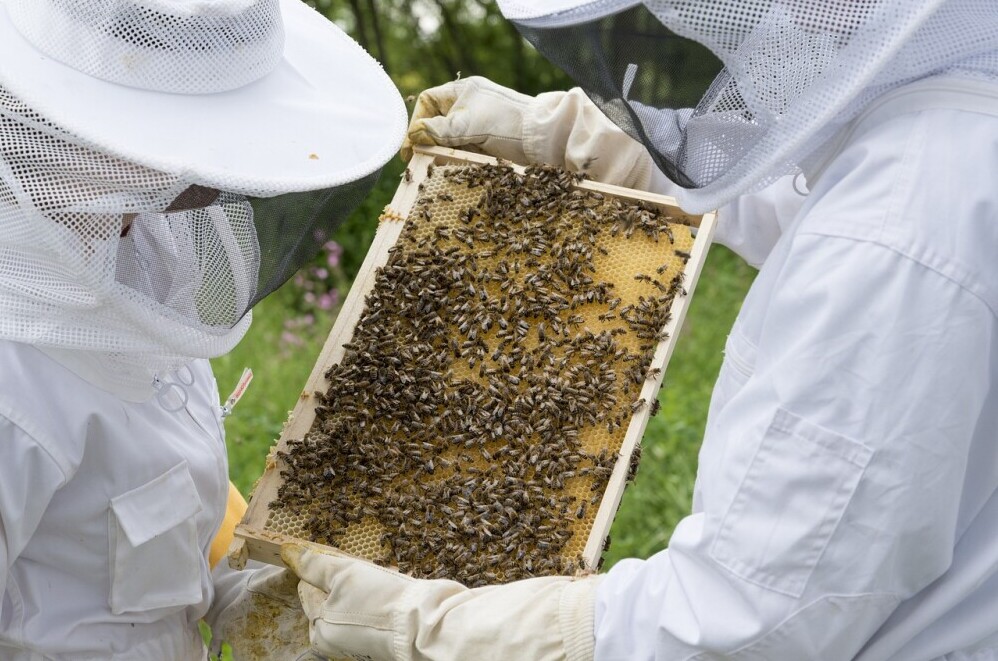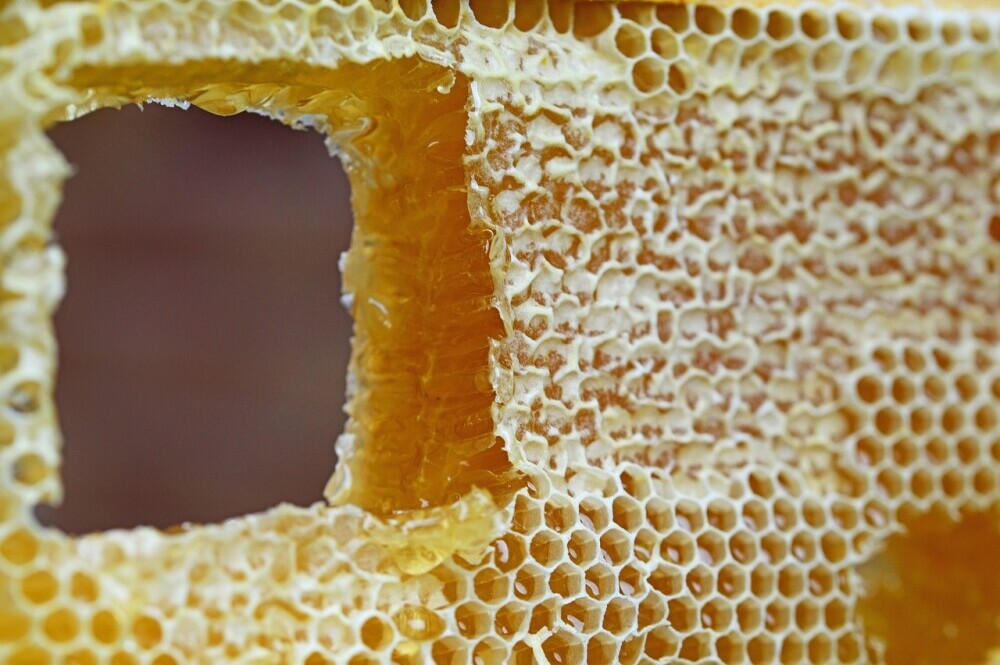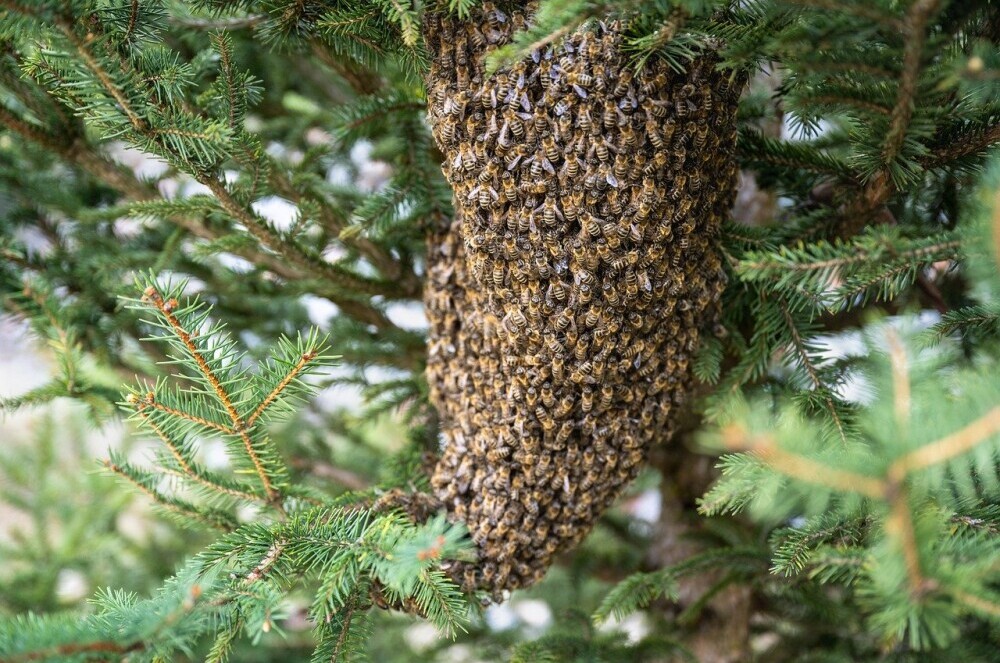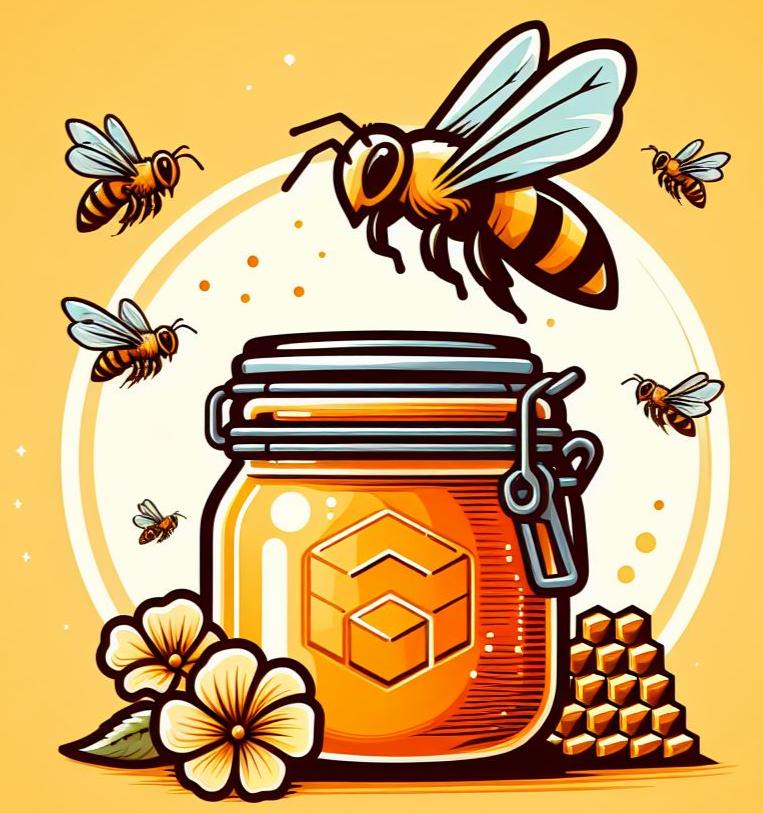
Beekeeping has been captivating people for centuries with its fascinating blend of nature and science. At its core, beekeeping is the practice of maintaining bee colonies, traditionally in hives, to produce honey, beeswax, and other products. Yet, there’s much more to this hobby than just sweet rewards. It’s also about understanding and contributing to the balance of our ecosystem.
Why should one consider beekeeping as a hobby? For starters, it’s a leisurely yet purposeful activity that connects individuals with the natural world. The observation and management of bees offer a unique way to relax while staying engaged with the environment. Plus, it’s incredibly rewarding to witness your hives thrive and to harvest honey from your efforts.
Bees play a critical role in agriculture as pollinators, contributing to the production of fruits, nuts, and seeds. Their presence is crucial in maintaining biodiversity and ensuring the growth of various plants that make up our food chain. Bees also lead to the production of honey, propolis, beeswax, and royal jelly to name a few – materials that promote health and support various crafts.
Before jumping in, there are a few things to consider. Beekeeping requires a commitment of time and patience. It demands regular attention to the hives throughout the seasons, understanding bee behavior, and learning how to respond to common issues.
It’s also important to consider the space available for keeping bees, as well as any local regulations that might affect setting up hives. Keep in mind potential allergies to bee stings when deciding if beekeeping is right for you. With the right preparation and mindset, beekeeping can be a delightful pursuit that enriches your life and the world around you.
Step 1: Starting Your Beekeeping Journey
Jumping into beekeeping is like stepping into a world buzzing with life and learning. As a newcomer, understanding what you’ll need and the roles of your future bee companions is a good place to start.
First, let’s talk about gear. To get going, you’ll need some essential equipment: a hive, protective clothing (like a suit and veil), a smoker, and hive tools. The hive is where the magic happens; it’s home base for your bees. Protective clothing keeps you safe and comfortable during hive inspections. A smoker calms the bees, making them more manageable, and the hive tools come in handy for various tasks, like prying open hive parts.
Getting set up can involve a bit of investment. Beekeeping kits are sold in many online stores and local outlets, sometimes available second-hand for budget-conscious beginners. It’s worth shopping around to balance quality with cost.
Understanding your new inhabitants is just as crucial. Honey bees are sociable creatures with defined roles in their colony. The queen lays eggs, workers maintain the hive and gather nectar, and drones focus on mating. Knowing their lifecycle and behavior helps in managing them effectively and anticipating their needs throughout the year.
Before diving into hive life, check the legal and safety aspects. Local laws might require permits or impose restrictions, especially in urban areas. It’s also smart to have a basic safety plan for handling bees to avoid stings and ensure your bees coexist peacefully with neighbours.
These initial steps set the foundation for a rewarding beekeeping experience. With the right equipment, a grasp on bee behavior, and attention to legalities, your adventure into beekeeping can start off smoothly.
Step 2: Setting Up Your Hive
Choosing the right hive lays the groundwork for successful beekeeping. Common hive types include Langstroth, Top-bar, and Warré, each with its own advantages. Langstroth hives are popular due to their modularity and ease of maintenance. Top-bar hives emphasise simplicity, with horizontal bars that bees build from naturally. Warré hives are vertically stacked, mimicking the bees’ natural nesting habits.
The location of your hive is crucial for bee health and productivity. Look for a spot that gets sunlight but is sheltered from strong winds. Suitably, a hive near flowering plants with easy access to water aids in bee nourishment and hive efficiency. Remember to maintain safe distances from human traffic to minimise disturbance to both bees and people.
Once you’ve pinned down your location, it’s time to assemble and place your hive. Building or buying a hive kit can streamline the process. Pay attention to hive height; placing it on a stand can protect from ground moisture and pests. Ensuring it’s level will prevent honey misalignment in the combs.
Now, it’s time to get your bee colony. Generally, beginners choose between buying a package of bees, a nucleus hive (commonly called a nuc), or capturing a local swarm. Packages are the most straightforward and widely available option. Nucs offer a head start on colony establishment since they already contain brood. Swarms, though cost-effective, require the know-how and caution demanded by the unpredictability of bees.
Preparing for the bees’ arrival is essential. Ensure your hive is ready and your gear is at hand. It helps to introduce the bees calmly and in favorable weather. Initial hive care involves routine checks to confirm that the queen bee is healthy and laying, a fundamental to building a robust colony.
Step 3: Hive Management and Care
Once your hive is buzzing with life, regular management keeps your colony thriving. Monitoring hive health through inspections is a key routine. These check-ups don’t need to be frequent, around every 7-10 days in spring and summer, allowing you to spot problems without disturbing the bees too much.
During inspections, lookout for a healthy queen who should be actively laying eggs, creating a solid brood pattern. This involves checking for pests, signs of diseases, and observing honey stores. Consistency here helps in catching issues early and maintaining a prolific hive.
Sometimes, your bees need a helping hand with food. Feeding them sugar syrup or pollen patties can help during times when natural nectar is scarce. Adjust feeding routines based on the seasons and the natural forage available in your area.
A healthy hive can still face threats from pests and diseases. Varroa mites, wax moths, and hive beetles are common challenges. Learning how to identify their presence quickly allows you to implement control measures promptly. There are preventive treatments like screened bottom boards or chemical treatments for severe infestations, each with their pros and cons.
Adapting your management to seasonal changes is crucial. Each season presents unique challenges and opportunities, from expanding in spring to consolidating in the fall. Familiarising yourself with these cycles turns you into an intuitive beekeeper, allowing your hive to flourish year-round.
Step 4: Harvesting the Fruits of Your Labour
Harvesting honey is one of the most rewarding parts of beekeeping, offering not just a sweet treat but a tangible outcome of your dedication. Knowing when to harvest is essential; mature honey should be capped, meaning the bees have sealed the comb with wax. This ensures the honey’s moisture content is low enough to prevent fermentation.

The tools for honey extraction vary, with options ranging from simple hand-cranked extractors to more sophisticated electric ones. Regardless of your setup, handling the frames gently to minimise disturbance to the bees is important. Protective gear and a smoker can help ensure safety during this task.
Processing and storing honey involves filtering out impurities and, if desired, bottling it for personal use or sale. Cleanliness during this process is key to preserving the natural quality and longevity of the honey. It’s also wise to store honey in a dry, cool place, keeping it away from direct sunlight.
Beyond honey, your hive provides additional treasures like beeswax and propolis. Beeswax is versatile and can be crafted into items like candles, soaps, or lip balms. Propolis, with its reputed health benefits, can be used in tinctures or topical applications.
Maximising the use of these by-products not only extends the value of your beekeeping efforts but also promotes a sustainable and resourceful approach. Engaging in DIY projects with these materials can be a fun and creative extension of your hobby.
Step 5: Seasonally Adaptive Beekeeping Practices
Beekeeping demands versatility, as each season brings its own set of challenges and tasks. Embarking on this journey involves understanding and adapting to these seasonal changes, ensuring your hive thrives year-round.
During spring, the hive comes alive as bees emerge from their winter rest. This is the time to focus on hive expansion and feeding, ensuring your colonies are invigorated for the upcoming nectar flow. Check for the queen’s activity and prepare the hive for potential swarming, which often occurs in late spring.
 Summer is the peak season for beekeeping. It’s all about maximising honey production while managing swarms. Pollen and nectar are abundant, and your bees will be working hard. Regular checks for hive health and space management become paramount. It’s also an excellent time to observe and learn from their natural behaviors.
Summer is the peak season for beekeeping. It’s all about maximising honey production while managing swarms. Pollen and nectar are abundant, and your bees will be working hard. Regular checks for hive health and space management become paramount. It’s also an excellent time to observe and learn from their natural behaviors.
Fall signals preparation for winter. Reduce the hive’s size to maintain warmth and begin treating for mites if necessary. Consider providing supplemental feeding to strengthen the colony before cold weather sets in. Insulating the hive against the chill is also wise during this transition.
Winter is more about waiting and monitoring. The bees cluster together for warmth, reducing their activity. Ensure that hive entrances are clear of snow or debris and provide emergency feeding when natural resources are low. Winter also offers beekeepers a chance to deepen their understanding without distractions, preparing for the next cycle.
By attuning to these seasonal rhythms, you ensure that your bees remain healthy and productive. This adaptive approach allows beekeepers to respond to the natural hive dynamics, maintaining a resilient and thriving colony.
Step 6: Engaging with the Beekeeping Community
Connecting with other beekeepers can enhance your journey, offering shared experiences and advice that’s invaluable, especially when starting out. Local beekeeping clubs are excellent places to meet fellow enthusiasts. These groups often host workshops, talks, and social events that provide both learning opportunities and a sense of camaraderie.
Online communities are a great resource, too, given their accessibility. Beekeeping forums and social media groups allow you to connect with individuals worldwide, sharing insights and troubleshooting common problems from the comfort of your home.
Building a community around your hobby does more than provide personal support. It contributes to wider conservation efforts, promoting awareness of the essential role bees play in ecosystems. Many beekeepers engage in public education, participating in environmental events to advocate for bee-friendly practices.
Continuing education is key in beekeeping due to its evolving nature. Books by experienced apiarists, online courses, and educational websites broaden your knowledge base and fine-tune your skills. Expanding your understanding keeps you engaged and informed about new techniques and challenges in the field.
Whether through local clubs or global networks, being part of a beekeeping community enriches your experience. It helps to grow, encourages sustainable practices, and ensures you’re never alone in navigating the ups and downs of this rewarding hobby.
Reflecting and Growing Your Beekeeping Hobby
Starting your first year of beekeeping provides a blend of challenges and triumphs that can deeply enrich your understanding of nature. Evaluating your initial experiences helps in pinpointing what went well and what areas need improvement. This reflection is vital for improving your skills and preparing for the following seasons.
Expect some difficulties as every beekeeper faces them. Whether it’s pest control mishaps or unexpected weather impacting your hive, each challenge comes with valuable lessons. Over time, you become better equipped to handle surprises and adapt your practices accordingly.
The satisfaction of seeing your bees thrive and the joy of harvesting your honey make up for any tough moments. Enjoying these achievements reinforces why beekeeping is so rewarding.
Looking ahead, consider expanding your beekeeping operation. This might involve adding more hives, experimenting with different hive designs, or learning advanced techniques like queen rearing. This growth depends on your enthusiasm and the time you can dedicate.
Moving beyond the basics allows you to dive deeper into the bee world and potentially engage with local farmers or small businesses, exploring opportunities like selling honey or beeswax products. The possibilities are vast, making it possible for you to tailor your hobby to reflect personal interests and community needs.
In beekeeping, continuous learning moves you forward. Each year multiplies your knowledge and enhances your connection with the environment, creating a fulfilling and evolving hobby that enriches both you and the ecosystem.
